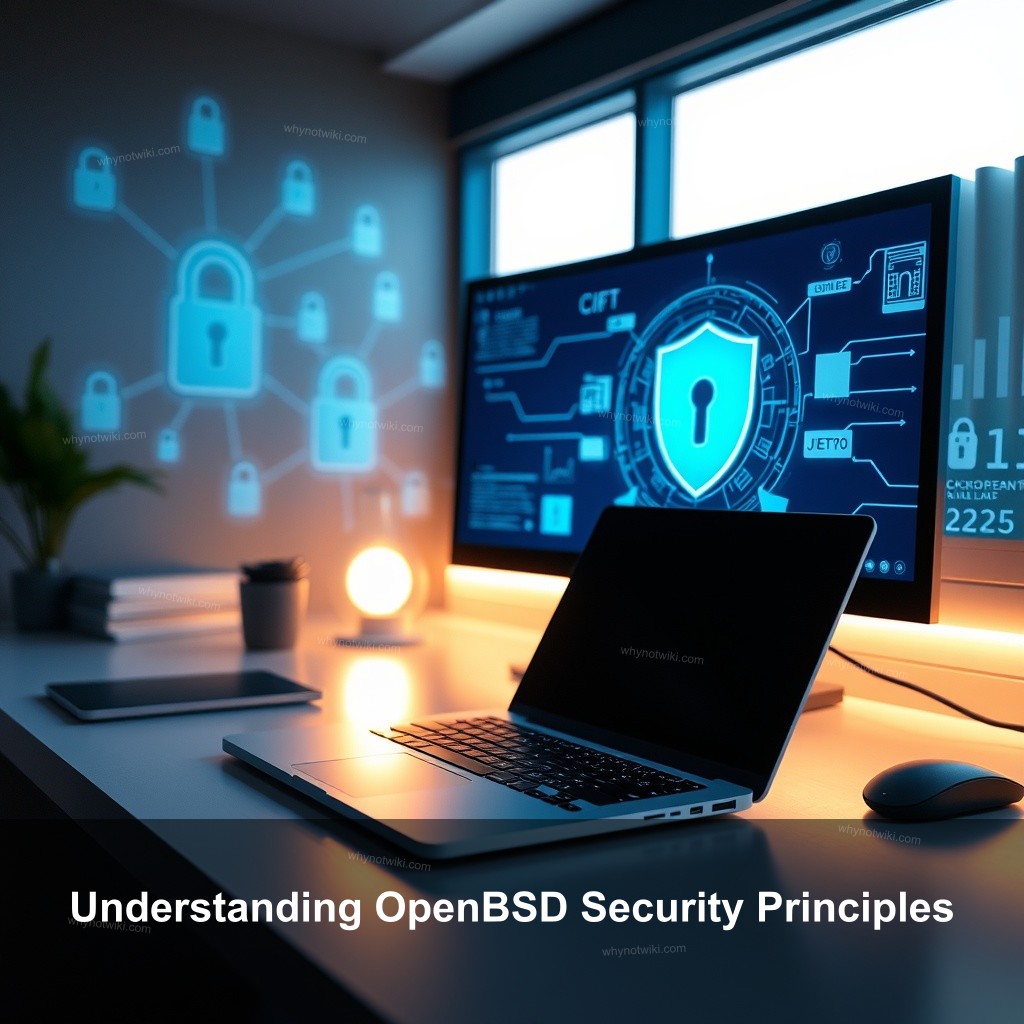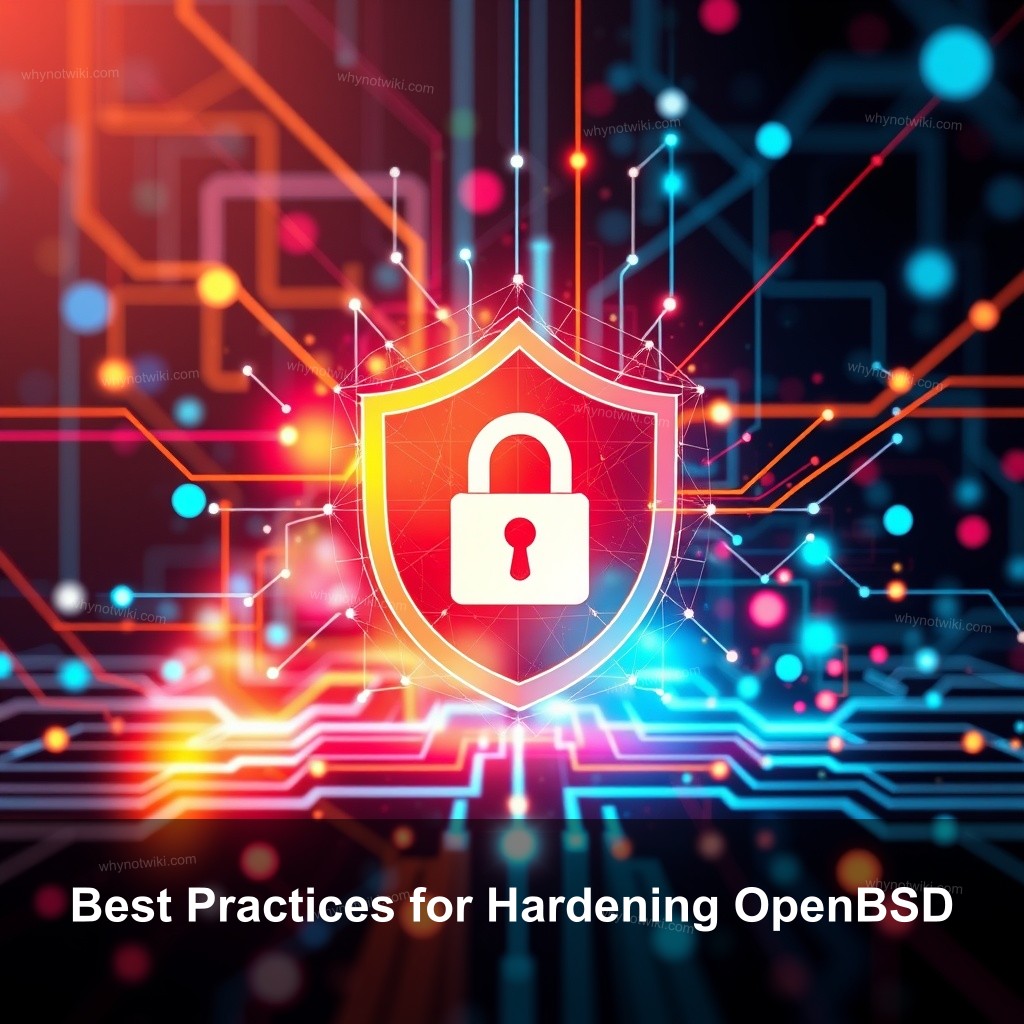In today’s technology landscape, ensuring the security of your systems is more crucial than ever. Understanding how to secure OpenBSD systems can protect your data and privacy from potential threats. In this post, we’ll explore best practices for OpenBSD security, including actionable steps you can take to harden your systems effectively. With insights from the experts at WhyNotWiki, you’ll gain the knowledge needed to implement robust security measures.

Understanding OpenBSD Security Principles
OpenBSD has built its reputation on a strong commitment to security. Its philosophy revolves around being ‘secure by default’ which means it comes with many necessary security features enabled from the start. This section will explain the core principles that guide OpenBSD’s security model.
| Principle | Description |
|---|---|
| Secure by Default | Minimizes the attack surface by disabling unnecessary services during installation. |
| Regular Updates | Security patches are routinely released to address vulnerabilities. |
| Community Support | Active community contributions lead to continuous improvements and updates. |
Overview of OpenBSD’s Security Philosophy
OpenBSD’s approach to security stands out in the open-source community. It minimizes the attack surface by disabling unnecessary services during the installation. This ‘secure by default’ philosophy is designed to protect users from vulnerabilities that can be exploited through services that are not actively in use. When you install OpenBSD, you’re greeted with a clean slate, allowing you to add only what you need.
Importance of Regular Updates and Patches
Keeping your OpenBSD systems updated is crucial. Security patches are routinely released to address vulnerabilities that may arise. By regularly applying these patches, you significantly reduce the risk of being compromised. For instance, a notable vulnerability in OpenBSD was swiftly addressed, showcasing the project’s responsiveness to security threats.
To ensure your system remains secure, set a schedule to check for updates and apply them promptly. This proactive approach is your first line of defense against evolving threats.
The Role of Community and Documentation in Security
Maintaining security is substantially aided by the OpenBSD community. User and developer contributions help to produce ongoing updates and enhancements. Furthermore, the copious of material at hand serves administrators quite well. It simplifies users’ implementation of best practices by offering thorough instructions on security policies and configuration choices.
For example, the OpenBSD FAQ section is a goldmine of information, answering common security questions and providing practical advice for administrators.

Best Practices for Hardening OpenBSD
Securing your OpenBSD system involves implementing best practices tailored to your specific environment. This section will cover effective methods to strengthen your system against potential threats.
Configuring the Firewall Effectively
Among OpenBSD’s unique characteristics is the packet filter (pf). A safe network environment depends on proper configuration of pf. Create policies specifying the traffic permitted in and out of your system. This helps to lower efforts at illegal access.
A practical example would be creating a rule that drops all incoming traffic by default, allowing only established connections. You can refine your rules to permit specific services as necessary.
Securing the Network Configuration
Network configuration is critical in protecting your OpenBSD system. Disable services and protocols that are not in use, as they can be potential entry points for attackers. For instance, ensure that telnet is disabled, and SSH is the only remote access method enabled.
Additionally, configuring strong encryption for your SSH connections increases security. Use key-based authentication instead of password-based logins to further secure access.
Utilizing Encryption for Sensitive Data
Data encryption is a fundamental practice in securing sensitive information. OpenBSD supports various encryption methods, including disk encryption and encrypted swap space. Implementing full disk encryption ensures that data remains protected even if the hardware is compromised.
Additionally, use tools like OpenSSL to encrypt files and communications, ensuring that even if an attacker intercepts data, it cannot be read without the appropriate decryption keys.
Implementing OpenBSD Security Tools
Utilizing the right tools can further enhance your OpenBSD security. This section highlights essential tools and their applications.
Overview of Essential Security Tools
OpenBSD comes loaded with many security measures meant to guard your machine. The basis of a safe environment is tools including OpenSSH, pf, and LibreSSL. For example, OpenSSH provides safe shell access to guarantee encrypted transmission of all data moved over the network.
To protect your system even further, consider integrating tools like fail2ban, which can monitor log files and block IP addresses that exhibit malicious behavior.
Monitoring and Auditing Tools
Regular monitoring and auditing are essential for maintaining security. Use tools like syslog to keep track of system logs and audit critical actions taken on the server.
Implementing monitoring tools that send alerts for suspicious activities helps you respond quickly. For example, setting up alerts for multiple failed login attempts can warn you of possible brute-force attacks.
Automation in Security Maintenance
Automating routine security tasks can save time and reduce human error. Consider using scripts or cron jobs to regularly update packages, apply patches, and check system integrity.
This automation not only maintains system security but allows you to focus on other important tasks, enhancing overall operational efficiency.
Common Security Challenges in OpenBSD
Even with strong security measures, challenges can still arise. This section discusses common issues and how to address them effectively.
Addressing User Permissions and Access Controls
Managing user permissions is crucial in minimizing security risks. Limit access to sensitive files and configurations to only those users who absolutely need it.
Implementing role-based access control helps ensure that users have the minimum necessary permissions to perform their tasks, reducing the potential attack surface.
Dealing with Third-Party Applications
Third-party programs run security hazards if not thoroughly checked. Before installation, always assess and lock ports. Look for well-known weaknesses and make sure the program is kept current.
Using tools like pkg_add with the -u flag to ensure that you are installing the latest versions of your applications, as these often include important updates.
Responding to Security Incidents
Having a response plan in place for potential security incidents is essential. This includes defining roles and responsibilities, as well as establishing communication protocols in the event of a breach.
Running drills or simulations can ensure your team is prepared for real incidents. This preparedness can significantly reduce the impact of any breach.
Keeping Up with OpenBSD Security Resources
Staying informed about the latest security developments is key to maintaining a secure OpenBSD environment. This section explores valuable resources.
Utilizing Official Documentation and Resources
Managers would find great value on the OpenBSD website. It comprises email lists, FAQs, and documentation that could help as needed. Reviewing the official material on a regular basis helps you to stay current on security measures and best practices.
You can also access community forums to discuss security concerns and share experiences with other users.
Engaging with the OpenBSD Community
The OpenBSD community is active and dedicated to improving security. Engaging with this community can provide insights and support. Participate in mailing lists or forums to share knowledge and learn from others’ experiences.
Attending conferences or local meetups can further enhance your understanding and provide networking opportunities with fellow OpenBSD users.
Staying Informed about Security News
Following security advisories and news is critical. Websites like the Common Vulnerabilities and Exposures (CVE) index provide valuable information on recent vulnerabilities affecting OpenBSD.
Subscribing to relevant security mailing lists keeps you informed about the latest threats and vulnerabilities.
Future Trends in OpenBSD Security
As technology evolves, so do security threats. This section discusses anticipated trends in OpenBSD security.
Emerging Security Threats and Solutions
As technology develops quickly, fresh risks are always developing. Maintaining proactive evaluation of possible hazards is absolutely vital. This covers knowing how fresh technology like artificial intelligence and machine learning affect security.
Implementing robust testing and security measures will be crucial in mitigating these risks.
The Evolution of Security Features in OpenBSD
The OpenBSD project has a history of evolving its security features to address new challenges. Staying engaged with the community can provide insights into upcoming changes and improvements that may bolster security.
Regularly reviewing release notes and participating in discussions helps you understand how these changes can affect your systems.
Community Involvement in Future Developments
Encouraging community involvement helps drive innovation in security practices. Your feedback and contributions can lead to meaningful improvements in OpenBSD security.
Consider volunteering for projects or sharing your insights on forums to help shape the future of OpenBSD security.
Frequently Asked Questions
What are the best practices for securing OpenBSD?
Best practices for securing OpenBSD include regularly applying updates, configuring the firewall, and utilizing encryption for sensitive data. Understanding the security philosophy of OpenBSD is also important.
How can I harden my OpenBSD installation?
To harden your OpenBSD installation, disable unnecessary services, configure strong firewall rules, and implement strict user permissions. Regularly review security settings and apply the latest patches.
What security tools should I use with OpenBSD?
Essential security tools for OpenBSD include OpenSSH for secure communications, pf for firewall management, and various monitoring tools to track system activity. Always keep these tools updated to ensure maximum protection.
How can I stay updated on OpenBSD security issues?
Stay updated on OpenBSD security issues by following the official OpenBSD mailing lists, checking the CVE index, and engaging with the OpenBSD community for discussions on recent vulnerabilities.
Is OpenBSD really secure by default?
Yes, OpenBSD is designed to be secure by default. It disables non-essential services and comes with a variety of built-in security features, providing a solid foundation for a secure system.
Conclusion
Securing your OpenBSD systems is an ongoing process that requires diligence and proactive measures. By implementing best practices, leveraging available resources, and staying informed about emerging threats, you can enhance your system’s security effectively. For more information and guidance on related topics, visit WhyNotWiki.

0 Comments